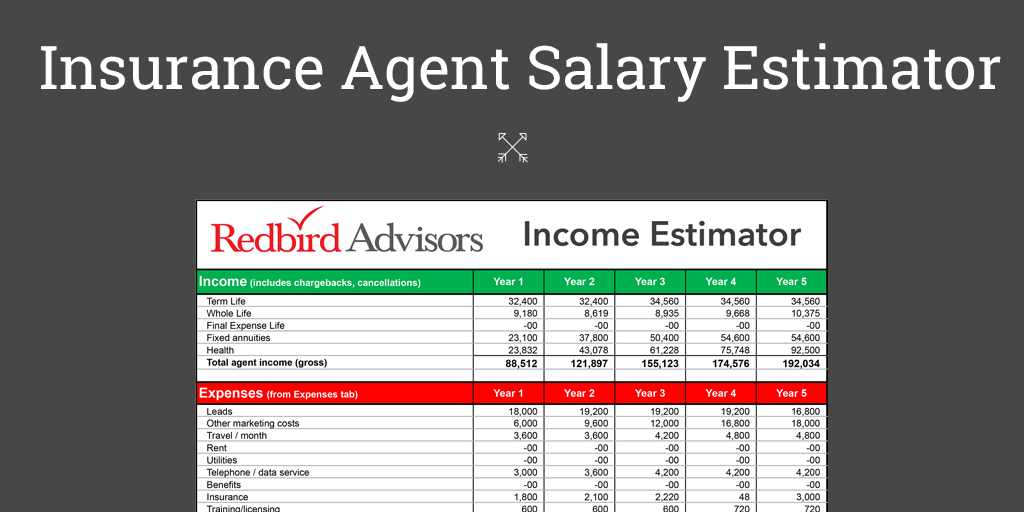
About the Author: Bob MacDonald
Robert MacDonald is a 50-year veteran of the life insurance industry. He is the former president and CEO of ITT Life Insurance, founder and CEO of LifeUSA and retired chairman and CEO of Allianz Life of North America.
To assure the continued growth and profitability, the life insurance industry needs another revolution.
During the last quarter of the 20th century the life insurance industry was forced into a period of structural and product change that had not been seen in over 100 years. Most of the established insurance institutions, comfortable with the way things were, not only did not recognize the need for change, but they also stubbornly tried to ignore and resist it.
The needed change was driven by several factors, but the primary trigger was the consumer who began to reject the traditional business model of the life insurance industry. At the time, the industry’s business model was predicated on offering, through a cadre of exclusive sales agents, long term products designed to protect against the economic cost of dying young. For almost a century this approach resonated with consumer needs and concerns and insurance companies grew to become financial behemoths.
Mindset Shift from Dying to Soon to Living to Long
However, medical advances ultimately increased male life expectancy from 42 to 73 years and female expectancy to 76. As a result, consumers became less concerned about the cost of dying to soon and began to worry about the cost of living to long in retirement.
Meeting the changing consumer needs and goals was the antithesis of the traditional life insurance company business model, causing expenses to increase, a decline in sales and reduced profits. At the same time, consumers were presented with more options for their funds as banks and investment firms began to introduce a portfolio of savings and investment products that outstripped those offered by the life insurance industry.
While change is often seen as a threat to be resisted by established companies, it can be an opportunity for newer, more nimble and creative companies. This is exactly what happened in the life insurance industry.
Insurance Distribution Evolution: Captive to Independent
In a highly edited version of the changes, companies moved away from the traditional “captive agent” distribution system, making agents independent 1099 contractors. This action triggered the development of Independent Marketing Organizations (IMO). The IMOs aggregated the newly independent agents into groups to support their product knowledge and sales efforts. In addition, companies shifted away from traditional long term life insurance products and began to emphasize the sale of the long ignored fixed annuity product.
The fixed annuity was more in tune with the consumer’s concern about the cost of living to long and running out of money and guaranteed income in retirement. As a result, over the past 30 years these changes stimulated renewed growth and profitability within the industry. So much so that the industry could be referred to as the “annuity industry” rather than “life insurance” industry. (The bulk of life insurance sales shifted to low cost “term insurance.”)
Customer Experience at the Center for the Need for New Changes
Over the past couple of years, I have come to believe that the marketing of Fixed Income Annuities (FIA) through the independent agent distribution system has become the most risk-filled and least rewarding business model for an insurance company. And, even for IMOs, agents, and the rest of the distribution community.
There are numerous reasons for this, but one of the main drivers is the plethora of “bells and whistles” that have been attached to the basic FIA contract. The intent of these added “benefits” has been to make the product more attractive to the agent and consumer by positioning the product as superior to those offered by other annuity companies. However, the result has been a cloud of FIA products offered by a variety of companies that are complicated and difficult to understand for both agents and consumers. Not to mention the costs for the companies to develop, market, issue and administer this wide variety of FIAs.
Undertrained Independent Agents
Another reason for the failing FIA business model is the continued erosion of the independent agent distribution system.
The story is too nuanced for this communication but suffice to say that this distribution system under the Independent Marketing Organization (IMO) has become unwieldly, inefficient, expensive and worst of all, ineffective. And, in many instances, leaving policy holders wildly underserved.
From my perspective, confirmation of this is evident in the actions of companies aggressively selling “access and control” of their distribution system to aggregators who are also buying IMOs. For the aggregators, the idea seems to be that “bigger is better,” but my belief is that this approach compounds the problems for companies, the agents involved and ultimately the consumer.
While the market for accumulation and income products remains expansive, the conclusion derived from all this is that the time for IMOs spearheading the sale of FIAs via independent agents may have even passed.
If so, this creates a significant risk for FIA focused companies that continue to compete with, rather than against, other companies for annuity market share, but my belief is that this situation creates a unique and highly profitable opportunity. My experience tells me that the FIA market is at a tipping point akin to the life insurance industry of the 1980s and ‘90s.
To take advantage of this new opportunity, old concepts, rules and products need to be discarded; to be replaced with a new way of doing business and a new product concept. Interestingly, many of these changes may take a “back to the future” approach.
In essence this means insurance companies once again taking ownership and control of the entire customer experience and relationship, something they sacrificed when independent distribution really began to scale.
The Proposed Solution
For the balance of this communication, I offer a macro-overview of how the business model and new product might function.
Insurance Company Structure
Moving forward, insurance companies should double down on digital transformation and utilize existing technology to convert all home office functions – marketing, underwriting, policy issue, policyholder service and benefit payments – to a totally paperless and on-line system.
Marketing and Sales
The company should control the entire marketing and sales process.
- The company will employ all forms of SEO, “Social Media” and advertising to identify potential sales prospects.
- The company will own and operate a “national call center” that will funnel all responding prospects to licensed employees of the company who will pre-qualify the individual, explain the product, close the sale and help the prospect complete the application.
Most of this process can be accomplished utilizing Skype or Zoom.
Introduce a New, Old Product
When life insurance companies shifted away from permanent life insurance, they did not invent a new product but just repositioned an old product – the annuity. Annuities had been in the insurance portfolio for 100 years, but they were considered only good for “widows and orphans.” A place for widows and orphans to put life insurance proceeds and generate an income (and allow the companies to hold the assets). Companies simply adjusted the “objective” of the annuity to one that accumulated assets and then paid a guaranteed income.
Likewise, the answer to today’s FIA problem is not the invention of an entirely new product, but rather the repositioning of a little used existing product – the endowment. (Decades ago, insurance companies sold endowments to young parents to accumulate funds to pay for a child’s college education.)
The first action a company should announce is (for whatever reason) they WILL NO LONGER SELL FIAs. Instead, they will introduce a new product – the GUARANTEED INCOME ENDOWMENT (GIE).
The GIE would be introduced to the consumer as a true alternative to existing fixed annuity products. A product with more simplicity, flexibility and consumer control, but with the same protections against running out of money and income in retirement.
Indeed, this product would be targeted to compete against rather than with annuities.
Guaranteed Income Endowment Highlights
This is a conceptual broad overview of a new product (using an old concept) called a Guaranteed Income Endowment. (GIE)
- Single premium purchase of endowment with guaranteed maturity value at the end of the term (2yrs, 3yrs, 5yrs).
- Little like a bond. Put in $95,500 guaranteed to mature at $100,000 at end of term in 3 years.
- The buyer may, at any time during the term, withdraw the full amount initially deposited. (Interest previously credited is forfeited as a form of surrender charge.)
- At end of the selected term the buyer may: A) withdraw all funds, B) roll over funds to purchase a new GIE at the then current rates, C) the buyer can exercise a “settlement income option” in the endowment that provides monthly income for a guaranteed fixed term.
- Settlement Income Option: Owner can elect guaranteed income for 10 – 15 – 20 or 30-year period. Because income is for a specific period, payout rates are not gender specific. If the owner dies prior to the end of the payout period, continued payments will be made to a named beneficiary until then end of the selected period.
- If the owner selects the settlement income option, they will receive an immediate “lump sum bonus” determined by the years of income selected. For example, if 15 years of income is selected, the bonus is equal to 15% of the endowment amount. Twenty years of income garners a 20% bonus and so on. The bonus is added to the endowment value and used to increase the monthly income.
Consumer Advantages of a Guaranteed Income Endowment.
The product is easier to understand than the current crop of annuity products.
Unlike typical annuities, consumers do not have to give up long term access to their funds. The policy owner can elect options when interest rates are most advantageous to them. Likewise, they have the power to decide if they want income from the product and how long they want income to continue.
Insurance Company Advantages of Guaranteed Income Endowments
- Easier to explain and sell the product.
- Fewer “suitability” and compliance issues.
- Escape from all the political and competitive misconception issues in the current crowed annuity market.
- The biggest advantage for the insurance company is that the GIE creates a whole new accumulation and income market, with no current competition.
The GIE totally eliminates the mortality risk of life income annuities (consumer assumes the mortality risk in exchange for what could be higher income for like amount converted to income.).
All liabilities are known and fixed. With known liabilities, it is easier for the company to match and manage investment durations. Interest rate and disintermediation risk is significantly reduced, if not eliminated.
One powerful advantage for a company offering this type of product is, because of its simplicity, the product can be offered directly to the buyer thus circumventing the need for an agent distribution system. Make no mistake, we are already seeing technology come to life that has the potential to remove the agent from the sales cycle.
Currently available technology can be used to market, issue and administer the product. (There are some organizations currently selling MYGA annuities using this technology.)
As a result, insurance companies can significantly reduce acquisition, marketing, administration and sales costs.
Summary
Forty years ago, changing consumer needs and increased financial options forced a reluctant life insurance industry to change.
Fortuitously the industry turned to a seldom used product – the fixed annuity – to respond to new consumer needs. Soon annuities became the industry’s largest asset accumulation product, revenue generator and profit maker. It is not an exaggeration to say that shifting to marketing fixed annuities may have saved the industry.
As the annuity became ubiquitous it became more and more difficult for companies to differentiate their product from the competition. The result was that annuities became overloaded with “options and benefits” to the point that the very simple concept of the annuity was lost.
Neither the consumer asked to purchase the product nor the agent attempting to sell it really could understand or explain it. This created the current confusion, controversy and conflict. The need and potential for an accumulation and income product is even greater today but is not a market a prudent company would want to operate in or enter today.
What is needed is change – a new revolution of the life insurance industry.
Real change in product. Change in how the product is marketed, issued and administered. The future is bright, but that future will belong to those who recognize the opportunity brought on by change.


